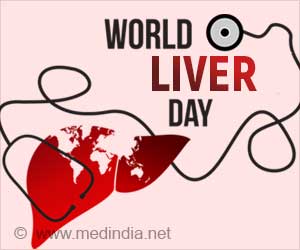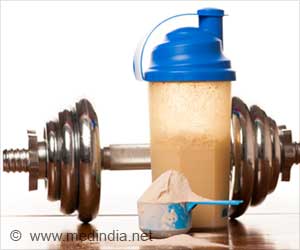Benzene is the 17th most abundantly produced chemical in the United States. It is obtained primarily from crude petroleum. It is a colorless or light yellow liquid at room temperature. It has a sweet odor and is highly flammable. It is formed from both natural processes and human activities. Benzene is also manufactured from the low-boiling fractions of the coal-tar distillate. It is of exceptional importance commercially on account of the many valuable compounds derivable from it. Benzene is used mainly as a raw material for synthesizing chemicals such as styrene, phenol, and cyclohexane and for manufacturing dyes, detergents, explosives, rubber, plastics, and pharmaceuticals.
Benzene is mildly irritating to the skin, eyes, respiratory tract and can cause central nervous system depression and arrhythmias to persons acutely exposed. Benzene damages the bone marrow and can cause a decrease in red blood cells, leading to anemia. It can also cause excessive bleeding and depress the immune system, increasing the chance of infection. Some women who breathed high levels of benzene for many months had irregular menstrual periods and a decrease in the size of their ovaries. Benzene toxicity in large part is due to generation of oxygen radicals. The US Department of Health And Human Services (DHHS) has determined that benzene is a known human carcinogen.Hematologic neoplasms such as Acute Myelogenous Leukemia (AML) have been documented to occur with chronic exposures to as low as 10 ppm benzene. Other neoplasms have been documented in animal models. It has been shown to cross the placenta in humans and is fetotoxic in animals. Recently Benzene was in the news for all the wrong reasons.
When tested many brands of soft drinks were found to have unacceptably high levels of benzene. As the issue of benzene in soft drinks heats up, several developments have occurred on both sides of the Atlantic. While the revelations have seemed to prompt remedial action in the UK, the same cannot be said of the steps taken by the Food and Drug Administration (FDA) in the U.S. The Food Standard Agency (FSA), the British equivalent of the FDA in the U.S, tested 230 different drinks and found that some contained benzene in concentrations of up to eight parts per billion (ppb).
Although UK has no formal restriction on the amount of benzene in soft drinks, the legal limit permitted in drinking water is only 1 ppb. Thus, the FSA ordered retailers to halt all sales of four soft drinks found to contain benzene in excess of that level. People living or working near high concentrations of exhaust fumes are exposed to far greater daily doses of benzene than have been found in soft drinks and drinking water, yet most governments and the World Health Organization (WHO) have set extremely low guidelines for the chemical when it is likely to be consumed by humans in a commercial product or public water supply.
When analyzed about how a poisonous chemical like benzene could wind up in a commercially produced soft drink, it was found that it could be by two ways. One being some episodes of benzene leaking into commercial products, such as soft drinks and bottled water, from faulty equipment or other outside sources. Secondly it is the by-product of a few simple chemical reactions between ingredients mixed together in the drinks themselves. Over 15 years ago, in an investigation that was never made public, and after which the beverage industry promised to reformulate its ingredients and otherwise get the word out about the problem, the FDA found unacceptable amounts of benzene in a number of soft drinks. Sodium benzoate (a preservative added to extend shelf-life by killing bacteria under acidic conditions) and ascorbic acid (vitamin C – artificially added to prevent spoilage and extend shelf-life or naturally occurring in fruits and vegetables) can react to produce benzene at levels above permissible limits.
Ascorbic acid will react with metals like iron and copper found in water to create hydroxyl radicals. Meanwhile, when exposed to an acidic environment found in many soft drinks, sodium benzoate breaks down into benzoic acid. When the free radical hydroxyl reacts with the benzoic acid, the carbon dioxide is removed and what is left is benzene.
Two important issues that have fueled the current debate and which consumer advocates believe must be resolved are:
(2) the need for regulations that place the same restrictions on benzene in soft drinks as those already in place with respect to drinking water. While the FSA seems to be serious about its probe and the actions it is prepared to take to protect the public from even an uncertain degree of harm, the FDA has found itself caught up in a series of missteps.
A research by the Environmental Working Group (EWG) discovered an FDA report that showed some soft drinks contained unsafe levels of benzene. The 2003 report known as the Total Diet Study incorporated data from research done between 1995 and 2001 that showed 19 of 24 diet soda samples tested contained benzene levels above 5 ppb. According to the EWG, benzene levels as high as 55 ppb were found and the average level detected was 19 ppb. Both figures far exceeded the 5 ppb tap water standard. In a separate study, the FDA found one cola containing a benzene level of 138 ppb. That study was looking for volatile organic compounds in foods and appeared in a 2003 issue of the Journal of Agricultural and Food Chemistry. Thus, the EWG and consumer advocates are concerned over the FDA’s apparent lack of concern for the public health. This brings into question the FDA’s commitment to keeping benzene at safe levels in the food supply and it may also demonstrate the influence of the American Beverage Association has on the agency’s determinations.
The furore was felt in India too. Indian cotton farmers turn to Cola to kill pests. They were flocking to buy Coca-Cola and Pepsi, believing that the sugar in the fizzy drinks kills pests. Farmers say scientists advised them to mix pesticides with a sugary syrup to control pests, and they found the mixture cheaper and more effective than pure chemicals. N. Hamunayya, who has become a celebrity in his village in the southeastern state of Andhra Pradesh, said his crop survived an attack of pests which had resisted other remedies. He said that the pest became numb and fell to the ground. Later an Indian parliamentary panel upheld a report by an environment group that said beverages made by Coca-Cola and PepsiCo contained pesticides and called for tougher safety standards. The U.S. firms strongly rejected the findings of the New Delhi-based Centre for Science and Environment and said their products were safe. Apparently, Coke is used for other things other than drinking. The properties of Coke have been discussed for years. It has been reported that it is a fine lavatory cleaner, a good windscreen wipe and an efficient rust spot remover. Uncorroborated reports from China claimed that the ill-fated New Coke was widely used in China as a spermicide.
The Centre for Science and Environment (CSE) reported the presence of increased amount of pesticides in the soft drinks which led to the Joint Parliamentary Committee (JPC) recommending regulations to put adequate safety standards into place. The recommendations of JPC related to soft drinks are
1) Standards should be fixed after proper consultations involving experts, scientists, farmer representatives, consumer organizations, trade and industry etc. The Committee also emphasized the need for taking the opinion of the Central Committee on Food Standards (CCFS) which is a statutory body under the PFA Act, 1954.
2) Standards for carbonated beverages, which are best, suited for the Indian conditions, need to be fixed in the overall perspective of public health. These standards should also be stringent enough.
3) Extraction of ground water for commercial use by the soft drink manufacturing companies or bottled water manufacturing companies should be properly regulated.
4) An option should be made available to the consumer to choose between caffeinated and non-caffeinated soft drinks and that there should be no difference in the quality of products being marketed in India as compared to those which are being sold in the USA or other European countries.
5) It further recommended that the onus for maintaining the quality should lie with the parent companies/brand owners and its compliance should be ensured. These recommendations speak volumes about total lack of concern on public health by the Government and absence of safety standards. Where there is lacuna, it is exploited for making profits and even where law exists, it is not implemented which creates chaotic situation and corruption flourishes at the cost of permanent damage to the human health and so the battle over benzene continues.





